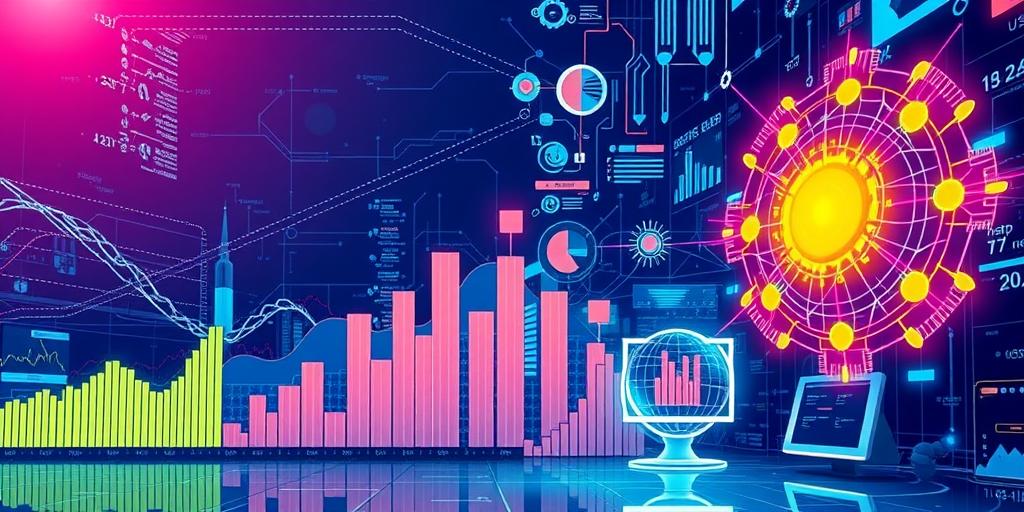Prepare to have your mind blown! Data science, the field that’s revolutionizing the world, didn’t just appear overnight. It’s a thrilling saga of evolution, a journey from the rigorous foundations of statistics to the breathtaking heights of artificial intelligence mastery. We’ll uncover the fascinating history, exploring the pivotal moments and key innovations that shaped this extraordinary field. Get ready to dive deep into the past, present, and future of data science!
From Number Crunching to Predictive Power: The Roots of Data Science in Statistics
The story of data science begins long before the term itself existed. Its roots lie firmly planted in the world of statistics. For centuries, statisticians have been meticulously collecting, analyzing, and interpreting numerical data. Think of early astronomers charting the movements of stars, or agricultural researchers studying crop yields – these were all early forms of data analysis, laying the groundwork for the sophisticated methods we use today. These foundational statistical methods, like hypothesis testing and regression analysis, formed the very bedrock upon which the edifice of data science was built. They provided the essential tools for making sense of complex datasets and drawing meaningful conclusions. The development of statistical software and the increasing availability of computing power further accelerated the process, enabling statisticians to tackle increasingly larger and more complex datasets.
The Statistical Revolution: Early Developments and Pioneers
The work of pioneers like Karl Pearson and Ronald Fisher were instrumental in establishing the core principles and methods of modern statistics. Pearson’s development of the chi-squared test and Fisher’s contributions to analysis of variance (ANOVA) and experimental design remain cornerstones of statistical analysis. The rise of computing power in the mid-20th century then allowed statisticians to apply these methods to far larger datasets than ever before, leading to significant advancements in diverse fields like medicine, engineering, and social sciences. But, this was just the beginning. The real transformation was yet to come.
The Rise of the Machines: The Integration of Computer Science and AI
The convergence of statistics with computer science marked a watershed moment in the evolution of data science. The exponential growth in computing power and the development of sophisticated algorithms opened up entirely new possibilities for data analysis. Suddenly, statisticians could not only analyze data but also automate the process, developing algorithms that could learn from data and make predictions without explicit human programming. This shift towards automated learning and prediction paved the way for the integration of artificial intelligence (AI) techniques into data science. Machine learning algorithms, like decision trees, support vector machines, and neural networks, were now able to analyze vast datasets, identify hidden patterns, and make predictions with remarkable accuracy.
Machine Learning Algorithms: The Engines of Prediction
The development and refinement of sophisticated machine learning algorithms were key to the integration of AI into data science. These algorithms allowed data scientists to move beyond simple descriptive statistics to create predictive models capable of forecasting future trends and outcomes. From predicting customer churn for businesses to detecting fraudulent transactions for banks, machine learning algorithms became essential tools across a broad range of industries. This capability significantly increased the value and impact of data science, transforming it from a primarily descriptive discipline to a powerful predictive one. The increasing sophistication of algorithms, coupled with vast amounts of data, fueled the emergence of deep learning, a particularly powerful subfield of machine learning.
Big Data and the Era of Deep Learning
The advent of big data presented both challenges and opportunities for data science. The sheer volume, velocity, and variety of data generated in the digital age required new approaches to data storage, processing, and analysis. The rise of cloud computing and distributed processing techniques addressed these challenges, enabling data scientists to work with datasets of unprecedented scale. This provided the fuel for the dramatic rise of deep learning, a subfield of machine learning that utilizes artificial neural networks with multiple layers (hence “deep”) to learn complex patterns from data. Deep learning algorithms have achieved breakthroughs in image recognition, natural language processing, and many other fields.
Deep Learning Applications: Transforming Industries
The power of deep learning is evident in its wide-ranging applications across numerous industries. In healthcare, deep learning algorithms are assisting in the early detection of diseases and the development of personalized medicine. In finance, they’re used for fraud detection and algorithmic trading. In manufacturing, they’re optimizing production processes and improving quality control. The possibilities are seemingly endless, and the pace of innovation continues to accelerate, leading to an ever-expanding range of applications for deep learning and data science in general.
The Future of Data Science: A Journey of Continuous Evolution
Data science is a field in constant evolution. As new technologies and techniques emerge, the capabilities of data scientists will continue to expand. The integration of quantum computing, for example, holds the potential to revolutionize data analysis, allowing for the processing of even larger and more complex datasets than ever before. The focus will increasingly shift towards explainable AI, ensuring that the decisions made by algorithms are transparent and understandable. Furthermore, ethical considerations will become even more paramount, with a strong emphasis on responsible data use and the mitigation of potential biases. The future of data science is bright, dynamic and full of possibilities.
Start your data science journey today! Embrace the power of data and unlock your potential!




